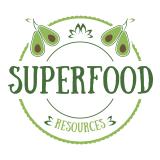Have you ever wondered how a simple kitchen ingredient like garlic could play a significant role in the fight against antibiotic resistance? This fascinating topic uncovers the impressive potential of garlic as a natural alternative to traditional antibiotics. As concerns about antibiotic resistance grow, understanding how garlic might support our health and combat resistant bacteria becomes crucial. Let’s dive deep into the world of garlic and its incredible properties.
The Antimicrobial Power of Garlic: Unlocking Allicin
Garlic has been used for centuries, not only as a flavorful addition to our meals but also for its medicinal properties. The key to garlic’s antimicrobial power is largely due to a compound called allicin. When you cut or crush garlic, allicin forms as it is exposed to air. This compound is responsible for garlic’s potent smell and, more importantly, its ability to inhibit the growth of various microorganisms including bacteria, fungi, and viruses.
Understanding Allicin’s Mechanism
Allicin disrupts the function of essential proteins within microbial cells. This disruption can hamper the ability of bacteria to grow and reproduce, which is why garlic has been recognized for its potential as a natural antibiotic. The unique mechanism by which allicin operates makes it incredibly valuable, especially in our time when antibiotic resistance is on the rise.
Challenges of Antibiotic Resistance
Before further exploring garlic’s potential, it’s essential to discuss why antibiotic resistance is a serious global issue. The misuse and overuse of antibiotics in healthcare and agriculture have accelerated the development of antibiotic-resistant bacteria. These superbugs, like MRSA (Methicillin-resistant Staphylococcus aureus), challenge our current medical treatments, making once-curable infections difficult to treat.
The Consequences of Antibiotic Resistance
The rise of antibiotic-resistant strains means prolonged illness, higher medical costs, and increased mortality. As traditional antibiotics become less effective, researchers and health professionals are racing to find new solutions. This is where garlic enters the scene, potentially supplementing conventional antibiotics and offering hope in our fight against resistant bacteria.
Garlic vs. Antibiotic-Resistant Bacteria
Research has shown that garlic possesses strong antimicrobial activities against several antibiotic-resistant strains. For instance, studies suggest that garlic can inhibit the growth of MRSA, among other pathogens. This ability to combat antibiotic-resistant organisms highlights garlic’s role as a promising natural remedy.
Potential Supplement or Replacement
While garlic may not entirely replace antibiotics in clinical settings, it could serve as a potent supplement. By incorporating garlic into treatment regimens, the efficacy of existing antibiotics might improve, reducing the necessity for high doses of drugs and decreasing the likelihood of developing resistance.
Boosting Immunity with Garlic
In addition to its antimicrobial properties, regular consumption of garlic may enhance the immune system. This can lead to a reduced incidence of common colds and infections. Rich in vitamins and minerals, garlic provides several health benefits that contribute to improved overall wellness.
Immunomodulatory Effects
Garlic is believed to stimulate immune cell activity, such as macrophages and lymphocytes, which play crucial roles in our body’s defense mechanism. This stimulation helps the body to fend off infections more effectively, thereby supporting a healthier, more responsive immune system.
The Downside of Misusing Antibiotics
Misuse and overuse in both healthcare and agriculture have been significant contributors to the rise of antibiotic resistance. For instance, using antibiotics for viral infections or not completing the prescribed course can lead to resistance.
Agricultural Use and Its Impact
Antibiotics are routinely used in agriculture to promote growth in livestock and prevent illness, leading to resistant bacteria that can be transferred to humans through food consumption. This underscores the need to find natural alternatives like garlic that are both effective and sustainable.
Garlic’s Role in Food Safety
Garlic isn’t only about health benefits related to bacteria but also about improving food safety. It has been shown to be effective against foodborne pathogens, such as Campylobacter, Salmonella, and E. coli, thus playing a critical role in reducing foodborne illnesses.
Enhancing Food Preservation
Garlic’s natural antimicrobial properties can be harnessed in food preservation. This helps in extending the shelf life of perishable goods without relying on chemical preservatives. Incorporating garlic into food products could mean safer, longer-lasting food supplies.
Combatting Stomach Infections with Garlic
Another area where garlic shines is its effectiveness against Helicobacter pylori, a bacteria associated with stomach ulcers and an increased risk of stomach cancer. Garlic’s compounds can inhibit this pathogen, potentially reducing these health risks.
Therapeutic Benefits for Digestive Health
Consuming garlic may not only help in reducing the prevalence of H. pylori infections but also support overall digestive health. Its natural properties promote a healthier gut environment, contributing to a well-functioning digestive system.
Incorporating Garlic into Diets: Tips and Considerations
Knowing the benefits of garlic is one thing, but integrating it into your diet is another. Garlic can be consumed in various forms — fresh, powdered, or as an oil — each providing unique benefits. However, it should complement medical treatments, not replace them.
Balancing Garlic with Traditional Medicine
While garlic offers numerous health benefits, it’s important to use it alongside conventional treatments. Consulting with healthcare providers ensures that garlic consumption is safe and effective for individual health needs.
Practical Recipes to Boost Garlic Intake
Here’s how you might incorporate more garlic into your meals:
- Garlic Tea: Boil water with crushed garlic cloves, add lemon and honey for a soothing drink.
- Garlic-Infused Olive Oil: Use this in salads, as a bread dip, or in cooking for added flavor and health benefits.
- Garlic Pasta Sauce: Combine fresh garlic with tomatoes and herbs for a delicious, immunity-boosting meal.
Use the table below to see how different forms of garlic compare in terms of ease of use and potency:
| Form of Garlic | Ease of Use | Potency of Allicin |
|---|---|---|
| Fresh Raw Garlic | Moderate | High |
| Garlic Powder | Easy | Medium |
| Garlic Oil | Easy | Low |
| Garlic Supplements | Very Easy | Variable |
Conclusion: Garlic as a Natural Ally Against Antibiotic Resistance
Garlic is more than just a culinary delight; it’s an ancient remedy with modern applications, especially in the context of antibiotic resistance. While it cannot entirely replace antibiotics, its role as a supplement offers a promising avenue in the global battle against resistant bacteria. By boosting immunity, improving food safety, and supporting digestive health, garlic emerges as a versatile natural ally. However, it should be used wisely, complementing rather than substituting traditional medical treatments. Seeking professional medical advice ensures that its use is both safe and effective.










